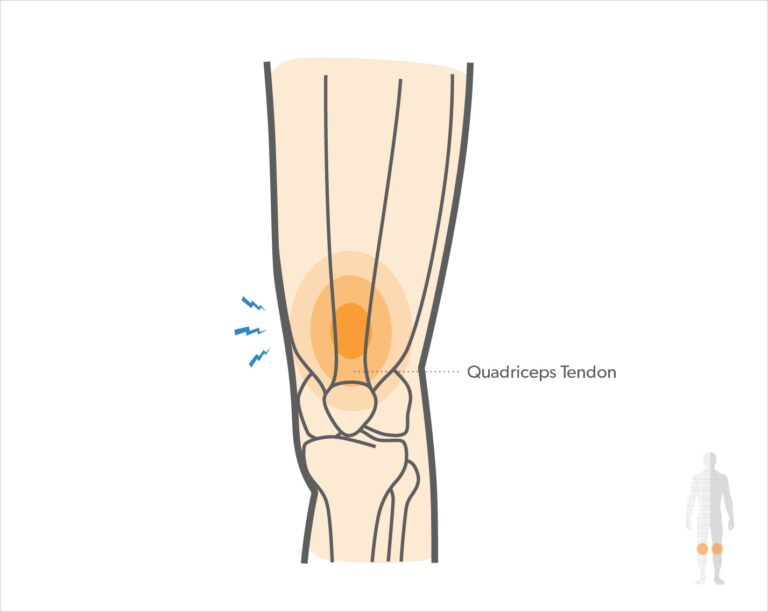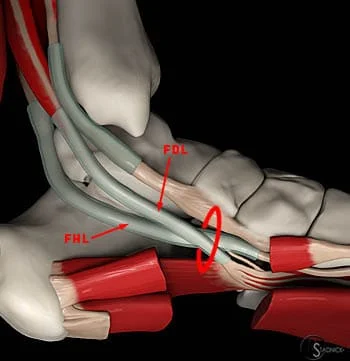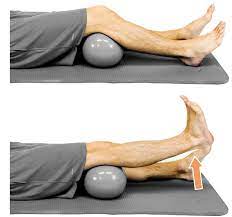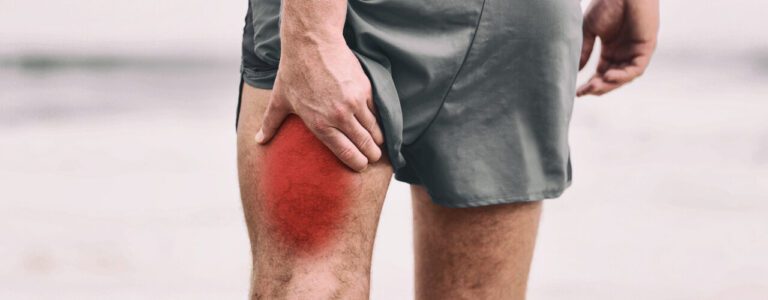Serratus anterior muscle stretching exercise
Table of Contents
What is serratus anterior stretch?
- The serratus anterior is also known as a boxer’s muscle. This is situated along the upper sides of the rib cage, 1st to 8th or 9th ribs & scapulae. This is fan shape muscle. A serratus anterior is facilitated the movement necessary to throw the punch. A serratus anterior performs forward as well as upward motion of scapulae & shoulder rotation.
- This muscle paralysis causes winging of scapulae. Performing serratus anterior stretch, the patient can achieve many benefits related to the upper body.
- Serratus anterior stretch has many health benefits as well as an important exercise to improve the flexibility of the upper body region & also the fitness level.
What is the importance of serratus anterior stretching?
There is some importance the patient needs to know:
- This helps in scapular protraction as well as retraction.
- This is the main stabilizer of the scapula during motion & at rest.
- Increase flexibility as well as mobility of muscle.
- Relieves muscular tightness as well as soreness.
- It also helps to relieve Serratus anterior pain
- Improves blood circulation & nutrients in the area.
- This also helps in the rotation of a shoulder joint.
- This helps you with routine activities, especially the throwing movement.
What are the types of serratus muscle stretching?
There are certain types that give the patient serratus muscle stretch :
- Crescent Side Bend
- Arm Stretch
- Doorway Stretch
- Bear hug
- SA self stretch
- Overhead reach
- Wall stretch
- Exercise ball stretch
Crescent Side Bend
- How to do this stretching exercise: Stand straight with a straight spine.
- Reach the arms toward the roof as well as place the palms together.
- Slide the scapulae down the back, lowering the shoulders away from the ears.
- Press the hips out to the right as you curl the upper body laterally to the left.
- Hold the stretch for 10 – 20 seconds, then repeat on the left side.
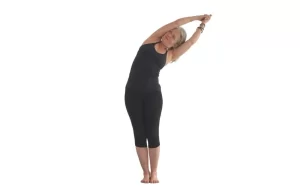
Arm Stretch
- How to do this exercise: Stand straight with an upright spine.
- Place the left arm behind the back with the left elbow slightly bent.
- Reach behind the back with the right hand and grab hold of the left wrist.
- Pull the left wrist gently toward the right hip.
- Lower the right ear toward the right shoulder to feel a deep stretch.
- Hold this stretch for 10- 20 seconds, then repeat on the right side.

Doorway Stretch
- How to do this exercise: Take the standing position in the doorway. Straighten the spine & stand straight.
- Place the left hand on the door frame at shoulder height.
- Place the fingers pointing toward the roof.
- Draw the left scapula closer to the spine.
- Keep the left palm planted firmly & turn the opposite body side, toward the right, until the upper body is facing forward & the left arm is behind you.
- Hold the stretch for 10-20 seconds, then repeat on the opposite side.
- When the patient feels pain during the stretch, stop right there & consult the physical therapist.
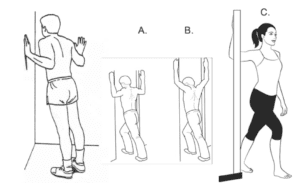
Bear hug
- How to do this exercise: Tie up the resistance band behind you just above the head level.
- Stand tall with the back facing towards the resistance band.
- Now grab the resistance band by the hands.
- Move the arms back to the forward-in front of you.
- Hold that movement to feel a stretch for 20 seconds.
- Repeat 3-4 times.
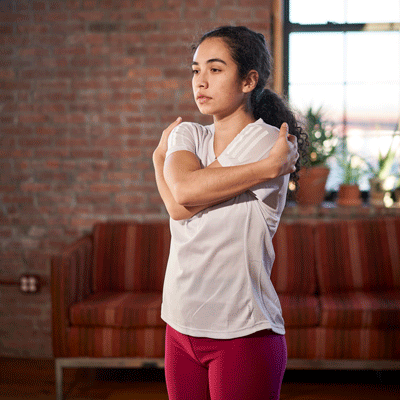
SA self stretch
- How to do this exercise: Take the sitting position on the chair. Move the body sideways, so that the back supports a chair at the side.
- Now grab the back support by using the whole same sidearm.
- Then move the upper body to the opposite side.
- Feel the stretch and hold for 15-20 seconds.
- Repeat 3-4 times. Perform it on another side.

Overhead reach
- How to do this exercise: Stand straight with your feet slightly apart.
- Move the arms upward-facing towards the ceiling.
- Bend at the left side at waist level without moving the lower body.
- The patient feels stretched at the left side of the serratus muscle.
- Holding time is 20 seconds and do it 3-4 times.

Wall stretch
- How to do this exercise: Stand sideways to a wall.
- Now move the opposite side of the arms overhead to touch the wall.
- Slightly bend the upper body to feel the stretch.
- Adjust the leg position for support.
- Feel the stretch at the side.
- Holding time is 15-20 seconds.

Exercise ball stretch
- How to do this exercise: Take the kneeling position in front of the exercise ball.
- Now bend forward at the waist during moving both arms forward to place on the exercise ball.
- Slowly move the ball forward with the arms.
- Reach forward until you feel the stretch.
- Holding time is 30 seconds & repeat.

Common mistakes are done while the serratus anterior stretch
There are some mistakes the patient needs to avoid during stretching:
- Hold every stretch long enough to achieve benefit.
- Do not force the muscles to feel the deep stretch, gentle stretch is also beneficial for you. Extra force gives the patient pain that is harmful to the muscle.
- Do not use bouncing movement while a stretch causes injury to the muscles.
- If you have prior any condition or injury, do not perform stretching.
- When the patient feels pain during the stretch, stop right there & consult the physical therapist.
- The patient needs to know how minutes he or she should hold the breath and then release the breath.
- The patient should do all these exercises once a day minimally.
FAQ
What causes serratus anterior tightness?
The most common causes of serratus muscle pain include tension; stress; overuse. This is common in sports with repetitive motions, eg swimming, tennis, or even weightlifting (especially with heavy weights). The pain may also result from serratus anterior myofascial pain syndrome (SAMPS), a rare myofascial pain syndrome.
What does the strained serratus anterior feel like?
Issues with a serratus anterior-most often result in pain in the chest, back, or even arm. These issues may also make it difficult to lift your arms overhead or have a normal range of motion with the arm and shoulder. The patient may experience arm or finger pain.
What happens when the serratus anterior is weak?
If the serratus is weak, then a shoulder blade literally cannot get out of the way of the arm, & that leads to pinching at the top of the shoulder, frequently known as subacromial impingement syndrome or even subacromial bursitis. Over time, this can even lead to the development of a rotator cuff tear.
How long does this take for a serratus anterior strain to heal?
Since breathing may become laboured, anxiety is common, which can be treated with anti-anxiety medications. Under proper care, the injury can heal within four to six weeks without needing aggressive treatment.
Where is serratus anterior pain felt?
Serratus anterior myofascial pain syndrome commonly presents with pain over the fifth to seventh ribs along the midaxillary line as well as radiates to the anterior chest wall, the medial aspect of the arm, the medial border of the scapula, & occasionally toward the fourth and fifth digits mimicking radiculopathy


